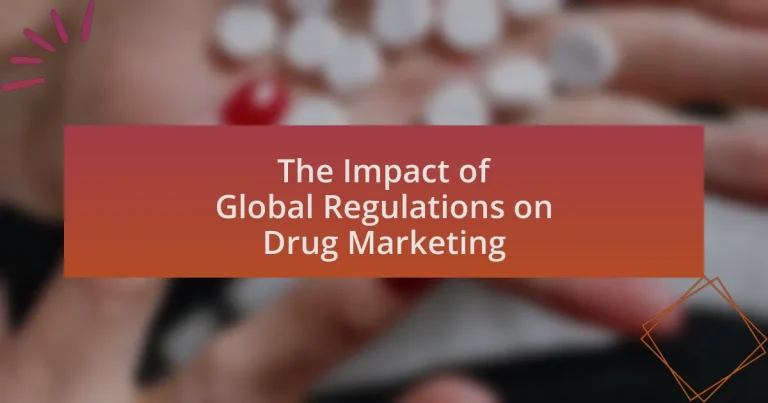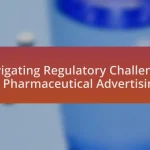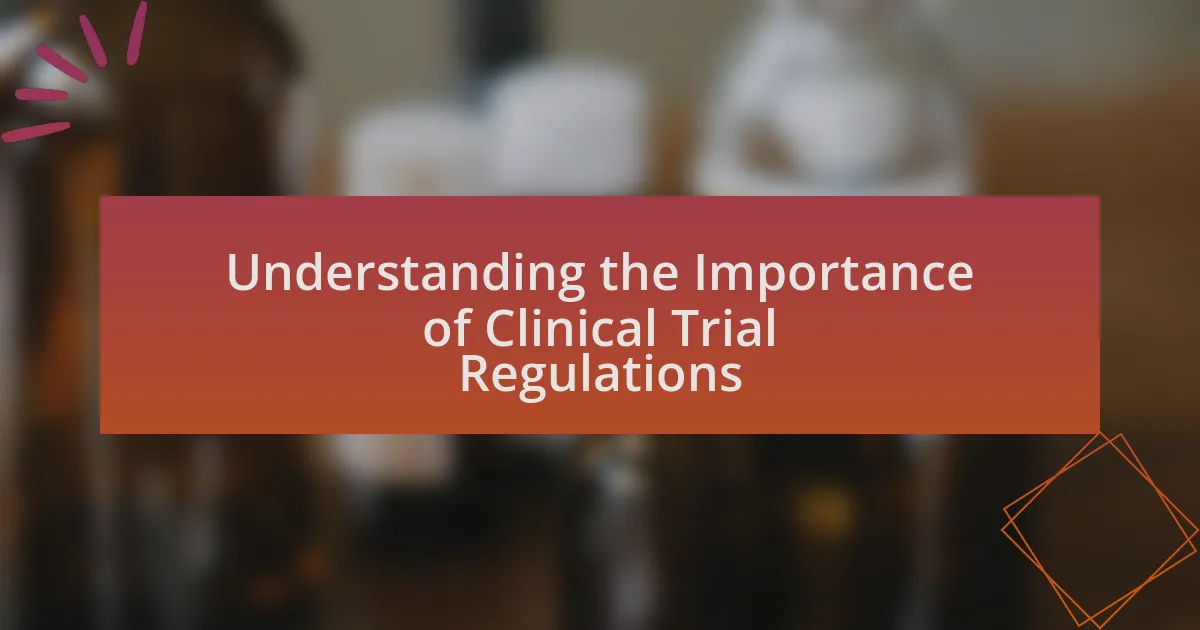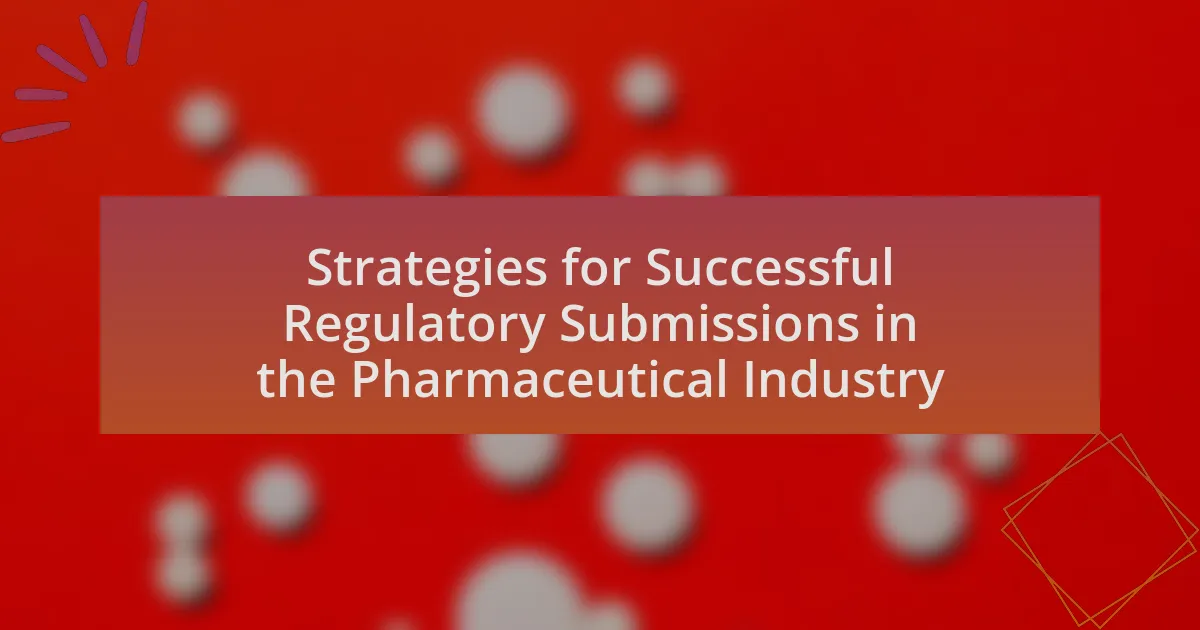Global regulations in drug marketing are essential legal frameworks established by various countries to oversee the promotion, advertising, and sale of pharmaceutical products. These regulations aim to ensure ethical marketing practices, protect public health, and maintain consumer trust by requiring truthful and substantiated claims about drug efficacy and safety. The article examines the significant variations in drug marketing regulations across different countries, particularly between the United States and Europe, and explores the challenges pharmaceutical companies face due to compliance costs and regulatory complexities. It also highlights the role of regulatory bodies, such as the FDA and EMA, in shaping marketing strategies and consumer perceptions, emphasizing the importance of adherence to these regulations for fostering brand trust and loyalty.
What are Global Regulations in Drug Marketing?
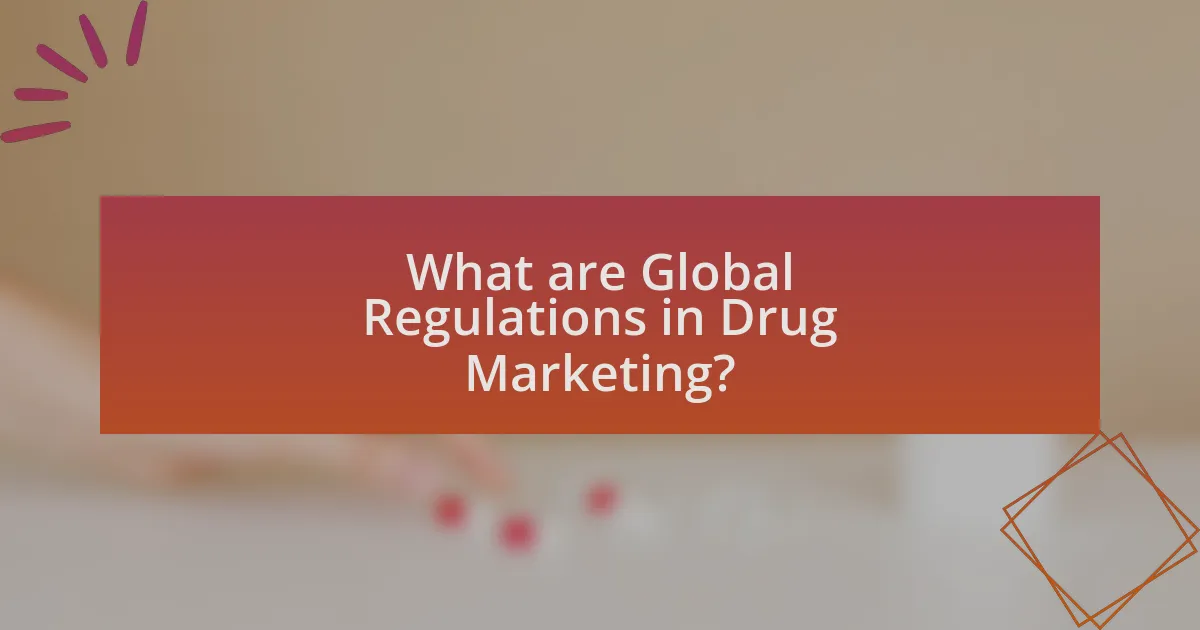
Global regulations in drug marketing are legal frameworks established by various countries to govern the promotion, advertising, and sale of pharmaceutical products. These regulations aim to ensure that drug marketing practices are ethical, truthful, and do not mislead healthcare professionals or consumers. For instance, the U.S. Food and Drug Administration (FDA) enforces strict guidelines on direct-to-consumer advertising, requiring that all claims about a drug’s efficacy and safety be substantiated by scientific evidence. Similarly, the European Medicines Agency (EMA) regulates drug marketing in the European Union, emphasizing transparency and the protection of public health. These regulations are crucial for maintaining trust in the pharmaceutical industry and safeguarding patient welfare.
How do these regulations vary across different countries?
Regulations on drug marketing vary significantly across countries due to differing legal frameworks, cultural attitudes, and healthcare systems. For instance, in the United States, the Food and Drug Administration (FDA) allows direct-to-consumer advertising, which is heavily regulated but prevalent, while in many European countries, such as Germany and France, direct advertising to consumers is prohibited, focusing instead on healthcare professionals. Additionally, countries like Canada have specific guidelines that restrict promotional activities and require transparency in drug pricing. These variations reflect each country’s approach to public health, consumer protection, and the pharmaceutical industry’s role within their respective healthcare systems.
What are the key differences in drug marketing regulations between the US and Europe?
The key differences in drug marketing regulations between the US and Europe include the approach to direct-to-consumer advertising and the regulatory bodies involved. In the US, the Food and Drug Administration (FDA) allows direct-to-consumer advertising for prescription drugs, requiring that advertisements include information about risks and benefits. In contrast, Europe generally prohibits direct-to-consumer advertising for prescription medications, focusing instead on healthcare professional-targeted marketing. Additionally, the European Medicines Agency (EMA) emphasizes a more stringent approval process, requiring comprehensive clinical data before marketing authorization, while the US FDA has a more flexible approach that can expedite the approval process under certain conditions. These regulatory frameworks reflect differing philosophies regarding consumer protection and pharmaceutical marketing.
How do emerging markets approach drug marketing regulations?
Emerging markets typically adopt a more flexible and evolving approach to drug marketing regulations compared to developed countries. This flexibility often stems from the need to balance public health concerns with the economic benefits of pharmaceutical investments. For instance, countries like India and Brazil have established regulatory frameworks that allow for direct-to-consumer advertising, which is more restricted in many Western nations. Additionally, these markets often prioritize rapid access to medications, leading to expedited approval processes for new drugs. The World Health Organization has noted that such regulatory environments can foster innovation while also posing challenges related to consumer protection and misinformation.
Why are global regulations important for drug marketing?
Global regulations are important for drug marketing because they ensure the safety, efficacy, and quality of pharmaceutical products across different markets. These regulations help to standardize practices, preventing the distribution of substandard or counterfeit drugs, which can pose significant health risks to consumers. For instance, the World Health Organization estimates that up to 10% of medicines in low- and middle-income countries are substandard or falsified, highlighting the critical need for stringent regulatory frameworks. Additionally, global regulations facilitate fair competition among pharmaceutical companies by establishing clear guidelines for marketing practices, thereby promoting ethical behavior and consumer trust in the healthcare system.
What role do regulations play in ensuring drug safety and efficacy?
Regulations play a critical role in ensuring drug safety and efficacy by establishing rigorous standards for testing, approval, and monitoring of pharmaceuticals. These regulations, enforced by agencies such as the U.S. Food and Drug Administration (FDA) and the European Medicines Agency (EMA), require extensive clinical trials to demonstrate that a drug is both safe for human use and effective for its intended purpose. For instance, the FDA mandates that new drugs undergo three phases of clinical trials, involving thousands of participants, to assess their safety and efficacy before they can be marketed. This structured approach helps to minimize risks associated with drug use and ensures that only those products that meet stringent safety and efficacy criteria reach consumers.
How do regulations protect consumers from misleading marketing practices?
Regulations protect consumers from misleading marketing practices by establishing clear guidelines that prohibit false or deceptive claims in advertising. These regulations, enforced by agencies such as the Federal Trade Commission in the United States, require that marketing materials provide truthful information about products, including their benefits and risks. For instance, the FDA mandates that pharmaceutical advertisements include balanced information about side effects and contraindications, ensuring that consumers receive a comprehensive understanding of the products they consider. This legal framework helps to prevent companies from exploiting consumer trust and promotes informed decision-making in the marketplace.
What are the Major Types of Global Regulations Affecting Drug Marketing?
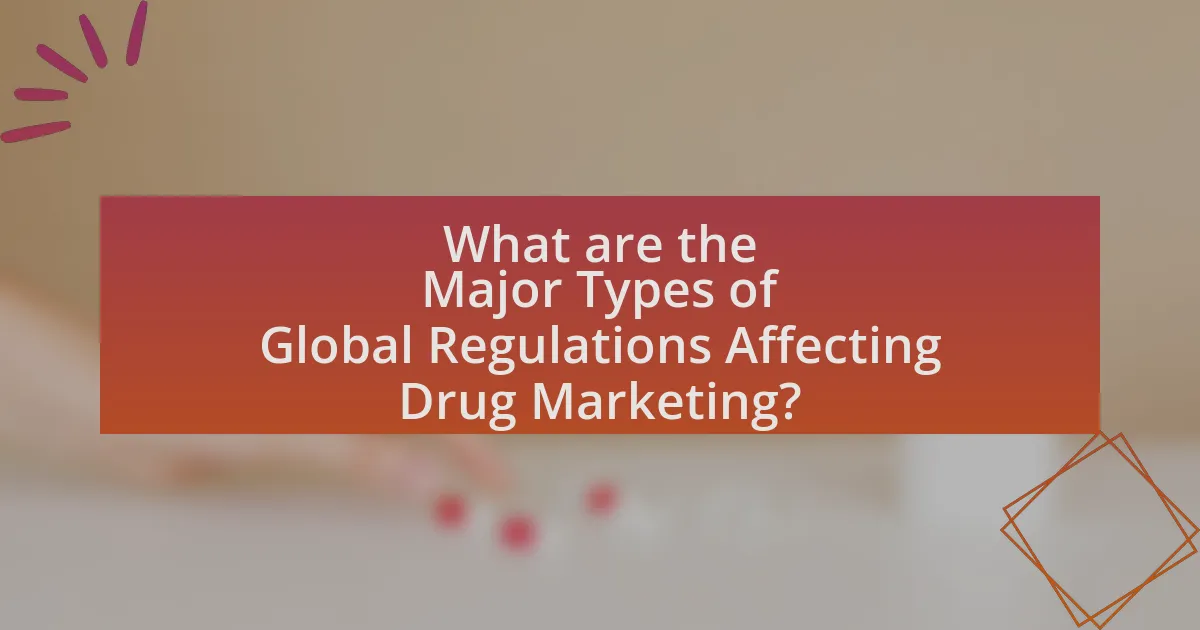
The major types of global regulations affecting drug marketing include advertising regulations, promotional practices, and pricing and reimbursement policies. Advertising regulations govern how pharmaceutical companies can promote their products, often requiring that claims be substantiated and not misleading. For example, in the United States, the Food and Drug Administration (FDA) oversees drug advertising to ensure compliance with the Federal Food, Drug, and Cosmetic Act. Promotional practices are regulated to prevent unethical marketing tactics, such as offering incentives to healthcare professionals for prescribing specific drugs. Additionally, pricing and reimbursement policies vary by country, influencing how drugs are marketed based on their cost-effectiveness and the reimbursement landscape. These regulations collectively aim to ensure that drug marketing is ethical, transparent, and in the best interest of public health.
What are the primary regulatory bodies involved in drug marketing?
The primary regulatory bodies involved in drug marketing are the U.S. Food and Drug Administration (FDA), the European Medicines Agency (EMA), and Health Canada. The FDA oversees the approval and marketing of drugs in the United States, ensuring they are safe and effective. The EMA is responsible for the scientific evaluation, supervision, and safety monitoring of medicines in the European Union. Health Canada regulates drugs and health products in Canada, ensuring compliance with safety and efficacy standards. These agencies play crucial roles in maintaining public health by enforcing regulations that govern drug marketing practices.
How does the FDA influence drug marketing in the United States?
The FDA influences drug marketing in the United States by regulating the approval, labeling, and advertising of pharmaceuticals to ensure safety and efficacy. The agency requires that all drug advertisements are truthful and not misleading, mandating that they include information about risks and benefits. For instance, the FDA enforces guidelines that require direct-to-consumer advertisements to present balanced information about a drug’s potential side effects alongside its benefits, as outlined in the Federal Food, Drug, and Cosmetic Act. This regulatory oversight helps maintain public trust and ensures that marketing practices do not compromise consumer safety.
What is the role of the EMA in European drug marketing regulations?
The European Medicines Agency (EMA) is responsible for the scientific evaluation, supervision, and safety monitoring of medicines in the European Union. The EMA plays a crucial role in drug marketing regulations by assessing marketing authorization applications for new medicines, ensuring they meet stringent safety, efficacy, and quality standards before they can be marketed. This regulatory process is governed by EU legislation, specifically the Regulation (EC) No 726/2004, which outlines the EMA’s responsibilities in the centralized marketing authorization procedure. The EMA’s evaluations are essential for maintaining public health and ensuring that only safe and effective drugs are available to patients in Europe.
What specific regulations impact advertising and promotion of drugs?
The specific regulations that impact advertising and promotion of drugs include the Federal Food, Drug, and Cosmetic Act (FDCA) in the United States, which mandates that drug advertisements must be truthful and not misleading. Additionally, the Drug Enforcement Administration (DEA) regulates the promotion of controlled substances, ensuring compliance with the Controlled Substances Act. In the European Union, the Directive 2001/83/EC governs the advertising of medicinal products, requiring that promotional materials are clear, accurate, and not misleading. These regulations are enforced to protect public health and ensure that consumers receive accurate information about medications.
What are the guidelines for direct-to-consumer advertising?
The guidelines for direct-to-consumer advertising (DTCA) primarily focus on ensuring that advertisements are truthful, not misleading, and provide a balanced presentation of risks and benefits associated with the advertised products. Regulatory bodies, such as the U.S. Food and Drug Administration (FDA), require that advertisements include essential information about the drug, including its indications, contraindications, and side effects, to enable consumers to make informed decisions.
Additionally, DTCA must avoid promoting off-label uses of drugs, and advertisements should not exploit vulnerable populations or create unrealistic expectations about treatment outcomes. The FDA monitors compliance with these guidelines through a review process, and violations can result in enforcement actions. These regulations aim to protect consumers while allowing pharmaceutical companies to communicate directly with the public about their products.
How do regulations govern the use of social media in drug marketing?
Regulations govern the use of social media in drug marketing by establishing guidelines that ensure truthful, non-misleading information is disseminated while protecting public health. In the United States, the Food and Drug Administration (FDA) requires that all promotional materials, including those on social media, adhere to the Federal Food, Drug, and Cosmetic Act, which mandates that drug advertisements must be truthful and not misleading, provide fair balance of information about risks and benefits, and include necessary disclaimers. Additionally, the FDA has issued specific guidance on social media, emphasizing that companies are responsible for monitoring and responding to user-generated content related to their products. These regulations aim to prevent the spread of misinformation and ensure that consumers receive accurate information about medications.
How do Global Regulations Impact Drug Marketing Strategies?
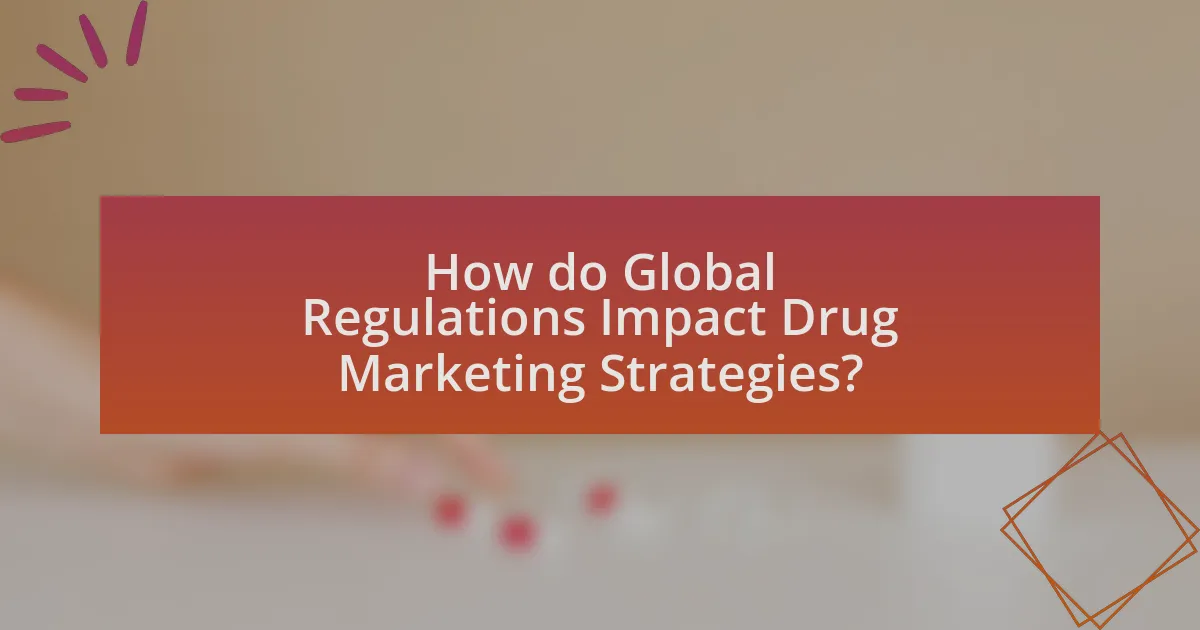
Global regulations significantly shape drug marketing strategies by imposing strict compliance requirements that dictate how pharmaceutical companies can promote their products. These regulations vary by country and often include guidelines on advertising, promotional materials, and direct-to-consumer marketing. For instance, in the United States, the Food and Drug Administration (FDA) mandates that drug advertisements must present a balanced view of benefits and risks, while in many European countries, direct-to-consumer advertising is prohibited altogether. Such regulatory frameworks compel companies to tailor their marketing approaches to align with local laws, which can lead to increased costs and complexity in global marketing campaigns. Additionally, adherence to regulations can influence the timing and methods of product launches, as companies must ensure that all promotional activities are compliant before proceeding.
What challenges do pharmaceutical companies face due to these regulations?
Pharmaceutical companies face significant challenges due to global regulations on drug marketing, primarily including increased compliance costs, restrictions on promotional activities, and the need for extensive documentation. Compliance costs can escalate as companies must invest in legal and regulatory expertise to navigate complex laws across different jurisdictions. Restrictions on promotional activities limit the ways companies can communicate with healthcare professionals and consumers, potentially hindering their ability to effectively market new products. Additionally, the requirement for extensive documentation and reporting can slow down the drug approval process, delaying market entry and impacting revenue. These challenges are compounded by the need to adapt to varying regulations in different countries, which can lead to inconsistencies in marketing strategies and operational inefficiencies.
How do compliance costs affect marketing budgets?
Compliance costs significantly reduce marketing budgets by reallocating funds that would otherwise be used for promotional activities. These costs arise from adhering to regulations, which often require extensive documentation, legal consultations, and compliance training. For instance, pharmaceutical companies may spend up to 20% of their marketing budgets on compliance-related expenses, as highlighted in a study by the Pharmaceutical Research and Manufacturers of America. This financial burden limits the resources available for innovative marketing strategies and outreach efforts, ultimately impacting the effectiveness of marketing campaigns in a highly regulated industry.
What strategies can companies employ to navigate regulatory challenges?
Companies can employ several strategies to navigate regulatory challenges effectively. First, they should establish a robust compliance program that includes regular training for employees on relevant regulations and guidelines. This proactive approach helps ensure that all staff are aware of the legal landscape and can act accordingly. Additionally, companies can engage in continuous monitoring of regulatory changes by subscribing to industry newsletters and participating in professional organizations, which provide updates on evolving laws and best practices.
Furthermore, companies can foster relationships with regulatory bodies to gain insights and clarify compliance expectations, which can facilitate smoother interactions during audits or inspections. Utilizing technology, such as compliance management software, can also streamline the tracking of regulatory requirements and deadlines.
Evidence of the effectiveness of these strategies can be seen in the pharmaceutical industry, where companies that prioritize compliance and maintain open communication with regulators often experience fewer penalties and smoother product approvals. For instance, a study by the Tufts Center for the Study of Drug Development found that companies with strong compliance cultures are more likely to achieve successful regulatory outcomes.
How do regulations influence consumer perceptions of drug brands?
Regulations significantly influence consumer perceptions of drug brands by establishing trust and credibility. When regulatory bodies, such as the FDA in the United States, enforce stringent approval processes and safety standards, consumers are more likely to view compliant brands as reliable and effective. For instance, a study published in the Journal of Health Communication found that consumers tend to favor brands that adhere to regulatory guidelines, associating them with higher quality and safety. This perception is further reinforced by marketing practices that highlight regulatory compliance, which can enhance brand reputation and consumer loyalty.
What impact do regulations have on brand trust and loyalty?
Regulations significantly enhance brand trust and loyalty by ensuring transparency and accountability in marketing practices. When companies adhere to strict regulatory standards, consumers perceive them as more reliable and ethical, which fosters a sense of trust. For instance, research published in the Journal of Business Research indicates that compliance with regulations positively correlates with consumer trust, as it reduces the perceived risk associated with purchasing decisions. Furthermore, brands that consistently follow regulations are more likely to cultivate long-term loyalty, as consumers tend to favor companies that prioritize ethical practices and consumer safety.
How can companies leverage compliance to enhance their brand image?
Companies can leverage compliance to enhance their brand image by demonstrating their commitment to ethical practices and regulatory standards. By adhering to global regulations, such as the FDA guidelines in the United States or the EMA regulations in Europe, companies can build trust with consumers and stakeholders. This trust is crucial, as studies show that 70% of consumers are more likely to purchase from brands that are perceived as compliant and ethical. Furthermore, compliance can serve as a differentiator in a competitive market, allowing companies to position themselves as leaders in corporate responsibility.
What best practices should companies follow to comply with global regulations?
Companies should implement a comprehensive compliance program to adhere to global regulations. This program should include regular training for employees on regulatory requirements, establishing clear policies and procedures, and conducting audits to ensure adherence. For instance, the Pharmaceutical Research and Manufacturers of America (PhRMA) emphasizes the importance of transparency and ethical marketing practices, which are crucial for compliance in drug marketing. Additionally, companies should stay updated on changes in regulations across different jurisdictions, as non-compliance can lead to significant legal and financial repercussions.
How can companies ensure their marketing materials meet regulatory standards?
Companies can ensure their marketing materials meet regulatory standards by conducting thorough compliance reviews and adhering to established guidelines set by regulatory bodies. This involves familiarizing themselves with the specific regulations applicable in their target markets, such as the FDA in the United States or EMA in Europe, which outline requirements for advertising and promotional materials.
Additionally, companies should implement a robust internal review process that includes legal and regulatory experts to evaluate marketing content before dissemination. Regular training for marketing teams on compliance issues and updates to regulations is also essential. For instance, a study by the Pharmaceutical Research and Manufacturers of America highlights that companies with dedicated compliance teams are more likely to produce materials that align with regulatory expectations.
What resources are available for staying updated on regulatory changes?
To stay updated on regulatory changes, professionals can utilize government websites, industry associations, and legal databases. Government websites, such as the U.S. Food and Drug Administration (FDA) and the European Medicines Agency (EMA), provide official updates on regulations affecting drug marketing. Industry associations like the Pharmaceutical Research and Manufacturers of America (PhRMA) and the International Federation of Pharmaceutical Manufacturers & Associations (IFPMA) offer resources and insights on regulatory trends. Additionally, legal databases such as LexisNexis and Westlaw compile regulatory changes and provide analysis, ensuring that stakeholders have access to comprehensive and timely information.
